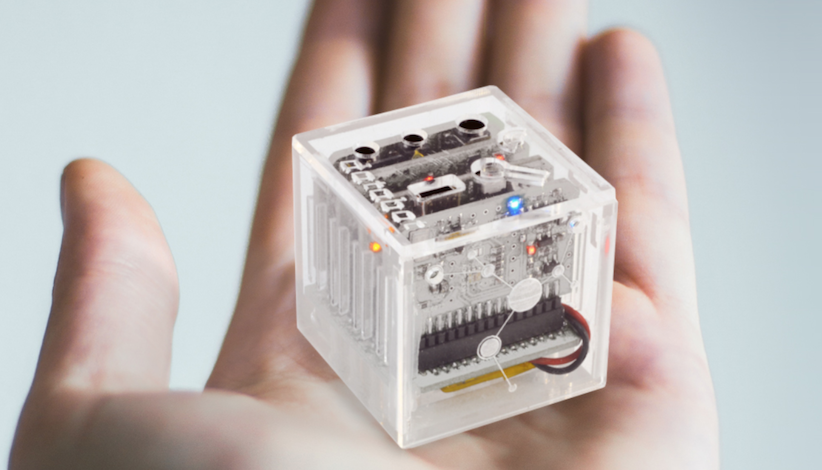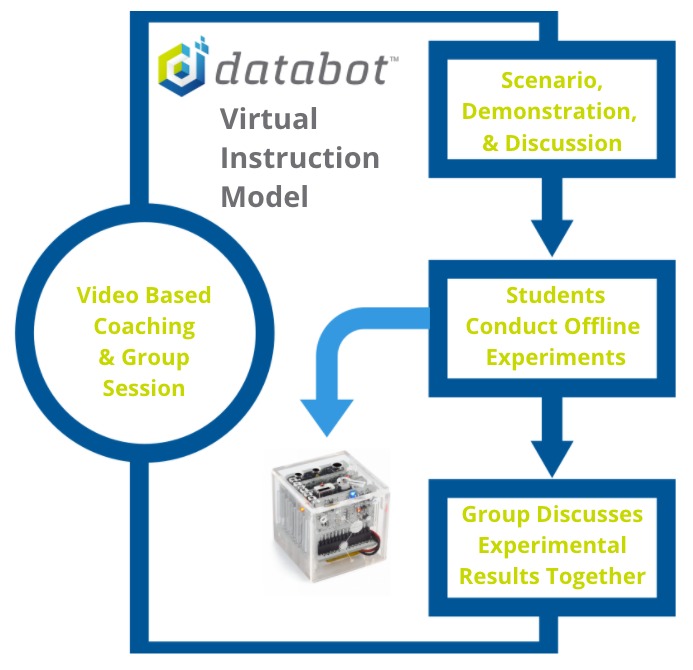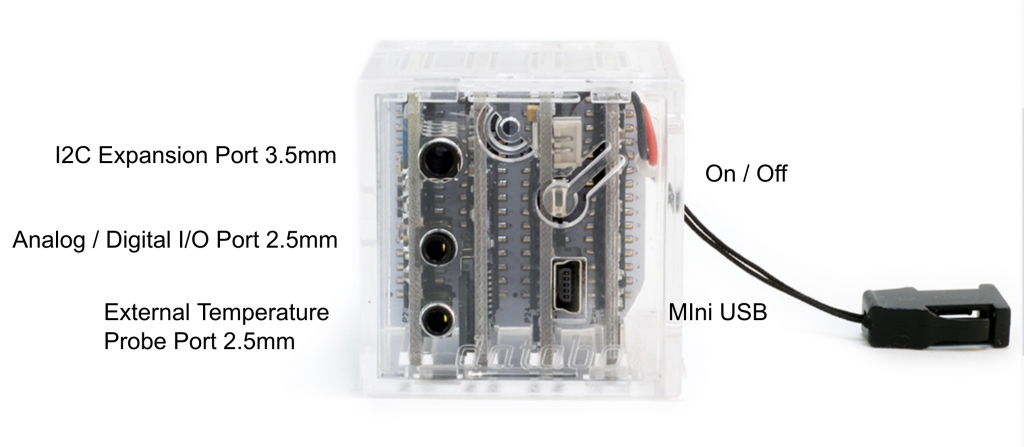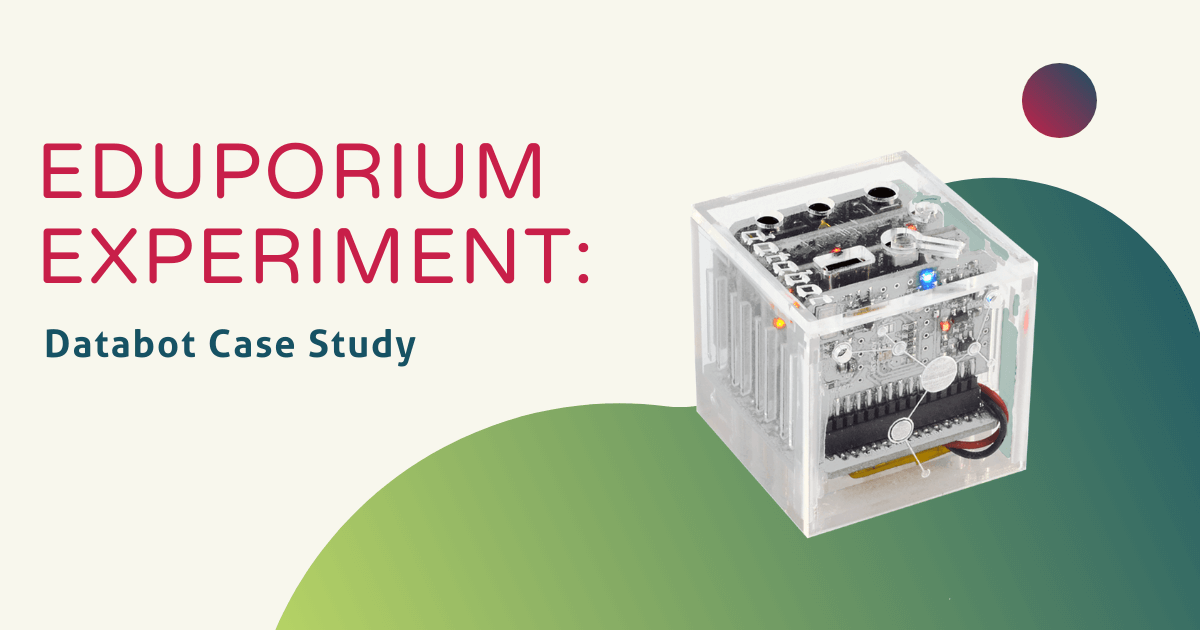In looking for remote and hybrid learning technologies, we have been focusing on recommending tools that are affordable, portable, and ones that students can use on a 1:1 basis. Ideally, they should also be easy to integrate and viable in all potential learning environments—whether as part of their school day, at home, or in different types of afterschool programs. For this week’s Eduporium Experiment, we are talking about how students can use the databot Robot in virtual learning and highlighting an example of one successful rollout in the STARBASE program led by members of the Department of Defense! The databot's constantly gathering data from its environment, which enables children to complete exciting projects, so let's explore what’s possible!
We have recreated this post from a post by the databot team. Check out the original post, too.

The databot is a very powerful, data-collecting robot so it should come as no surprise that it was used in a program associated with some of the country’s top minds. Like you might imagine, everybody at the DoD places a huge emphasis on STEM education and on helping kids explore STEM literacies that will translate to success in a future STEM career. The STARBASE initiative has been around since 1993 with sponsorship from the Secretary of Defense for Manpower and Reserve Affairs. It’s now in programs at 69 locations in 33 states and has helped almost 100,000 kids experience STEM! Also, the STARBASE 2.0 Outreach Program is in 99 locations across 23 states. It helps to steer kids towards innovative STEM careers by introducing them to engaging, hands-on experiences.
In one of the STARBASE programs, which is based in Austin, they moved their STEM programs online and used the databot to facilitate authentic STEM experiences for students. Of course, they had to try to find a creative way to keep STEM learning alive for students because of the pandemic and we are happy to say they have definitely succeeded so far despite some challenges along the way. Normally, all the STARBASE programs are designed for in-person instruction, which wasn't possible this past year. Needing something easy to implement in remote, 1:1 learning, the databot was a solution that worked in this virtual project.
For this particular program, all participants had a device, which is necessary for adequately participating in most remote STEM programs. Ideally, kids will have the same device to help make blanket implementation easier, which was the case in this program. The databot is compatible with multiple device types, including iOS and Android devices, so there are a variety of options to choose from if you’d like to try it out in remote learning. As we’ve said since the pandemic began, the databot is well-suited for remote learning thanks to its unique attribute set.

Among the features that helped make the databot viable in this particular project and other remote learning exercises are its versatility, simplicity, portability, and alignment to NGSS standards. Starting with its unique versatility, the databot is built on an Arduino platform with a full spectrum tone generator and brilliant white LEDs that users could control using the Arduino IDE, Python, or other programming environments. Its self-contained form factor and minimal parts also contribute to making it effective for physical coding lessons in remote education. Besides that, students can take part in physical computing activities without all the logistical challenges that often come into play.
As for simplicity, pairing their databot with a compatible device is very quick using the iOS or Android app. In fact, it’s a one-touch process that involves kids selecting their experiment from a list of icons, tapping on the selected activity, and completing the prompts to connect to their device. There are no configurations or calibrations required for pre-configured activities. As for portability, it'll fit in your hand and it's easy to ship or distribute to students in different locations. The databot’s are also very easy to clean, which we know is important to teachers and parents these days!
In terms of NGSS alignment, it aligns across multiple science disciplines, most notably the eight essential Science and Engineering Practices. One of those key practices is analyzing and interpreting data, which is exactly what they can do with the databot and what students participating in the STARBASE programs did. In pretty much all projects involving their databot, children are learning about collecting and analyzing data. This has proven to be an invaluable skill that’s required for successes in so many 21st century careers! The databot is also very durable with all kinds of sensors and self-contained with a rechargeable battery.

Then, with all that in mind, the STARBASE team created an effective instructional model to use in remote STEM experimentation. They'd combined curricular materials from the databot CO2 Science Series with original activities to create experiments using the databot’s sensors. They then made use of video chatting to deliver the instruction to students each day. It began with a virtual introduction to the experiment, a 45-minute problem-based scenario, demonstration of the experiment, and a discussion. Each day, kids used different databot sensors in experiments, spending the first part of lessons learning about that sensor.
These sessions took place each morning of the program and helped children learn about key things they’d need to know. They'd also form a hypothesis for what they thought may happen in their experiment. At the conclusion of the virtual sessions, students began to work on the ensuing experiments independently. For this part, they needed the databot, a device, and other simple materials that were provided. In completing the experiments, they would capture real data using their databot and either confirmed or reassessed their hypotheses. They’d meet again in the afternoon to discuss what they learned, share additional ideas, and communicate individual results.
While not the environment we want to use the databot, it’s a prime example of adaptability in almost every situation! Thanks to its power and versatility among additional attributes, the databot makes a nice option for STEM-based experimentation at home. If you would like to learn more about the databot, you can find these various kits on our store! If you have questions, feel free to contact us and follow us on Twitter and Instagram for more EdTech info.



